- Home
- Feature Articles
- El Jabalí ataca de nuevo
Resurrection of the wild boar
Wednesday, March 9, 2016
Number: 26
The wild boar is a peaceful animal unless it feels threatened. It then becomes wild and dangerous, difficult to stop. Those may have been the qualities which led it to be chosen to appear on the emblem of the 2nd Special Operations Group “Santa Fe”, which was created in Granada in 1985 and dissolved in 1998.
A new Special Operations Group was set up within Special Operations Command on 15 January 2016 to be the heir to the “Santa Fe”, and it has adopted the wild boar as well as much of the dissolved unit’s history and traditions. The task of historic recovery is being carried out by Sergeant Major Guillén, the first to occupy this position within the new Group, who considers his appointment an “end-of-career gift”.
With over 30 years’ experience as a green beret, Sergeant Major Guillén has devoted his whole life to the unit. Following his promotion he was on standby for several months waiting for the appropriate opening, encouraged by the hope that he would be able to stay at Special Operations Command.
As sergeant major within the Group, his duties are very different to those he used to carry out. He is now more focused on his role as intermediary and spokesman for the concerns of his subordinates. A crucial task, especially for a newly created unit.
Another issue which takes up much of his time is delving into the archives of the Command’s hall of memories for pictures and documents related to the Special Operations Group “Santa Fe”, to provide the new unit with its own identity. This will help its members identify with it and will foster cohesion.
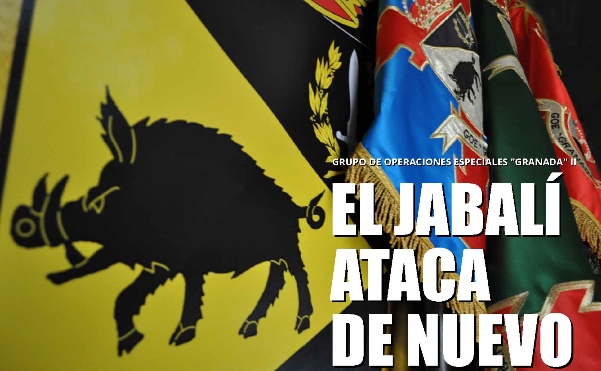
Resurrection of the wild boar. Photo: DECET
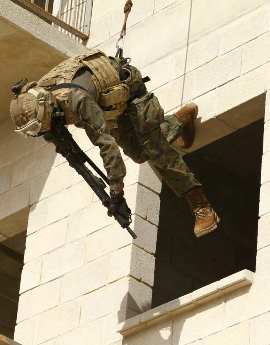
Army urban training. Photo: DECET
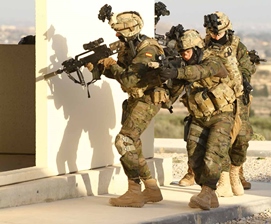
Special Operations Command team in action. Photo: DECET
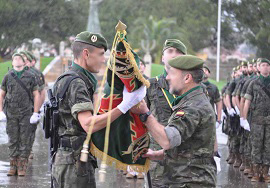
The new unit receives its standard. Photo DECET
Two missions to start off with
Cohesion is a priority in order to face the two foreign missions “Granada” will undertake next May: Iraq and Mali. It will be deployed to the two settings simultaneously in what will be its debut abroad. For the second commander, Major Mora, this challenge is welcome as “a way to motivate the unit and push it forward”.
But that is not the only challenge the Group has had to face. The officers are provisionally based at the Tactical Operations Centre of Special Operations Command, while some of its teams are located at the original facilities of the Special Operations Group - they are all waiting for the remodelling work in the building which will be their home to be complete. Regarding the furniture, they have already received part of it; the rest will be arriving from other units which are being dissolved.
“It is a challenge for the members of the Special Operations Group; we are all responsible for setting the foundations of this unit. If the initial work is not done properly, the tree will grow crooked. However, if we do it right, we will soon have nothing to envy of our colleagues in the other Groups which make up Special Operations Command,” explains the commander, Lieutenant-Colonel Jiménez.
The two missions mentioned above will be the first for the unit, but most of its members have experience on the ground. This is unsurprising given that the 2nd Special Operations Group was formed with “members from the three other special operation groups – although its senior staff constitute a brand new team. This means that the personnel is no different from that of other teams within Special Operations Command,” according to the commander.
In the spring it is expected that personnel from other units will be able to apply to join the new Group so as to gradually complete it. That is the way such units are created, because “things cannot be done overnight. Training a special operations soldier until he or she is fully operational takes almost two years, and it is necessary to be extremely selective and maintain the highest standards. The growing process is slow in order to avoid compromising quality, which should be avoided at all costs,” he added.
Sergeant Lozano is among the most veteran in the Group. He used to be a member of the 4th Special Operations Group and volunteered to join the new one. After ten years in the job, he is the most experienced sergeant in the unit and will be able to assume all the duties which come with that position. He will be going back to Iraq, where he was stationed in 2003-2004, in what will be his seventh mission abroad.
His case is similar to that of many of the members of Special Operations Command: He volunteered for military service and enjoyed it so much that he decided to stay. That was 24 years ago. He has served in two special operations companies and two special operations groups, and considers it an “honour” to take part in the creation of the new Group as one of its founders. He hopes this will be the last unit he serves in.
Four groups for the four phases of the cycle
The 2nd Group “Granada” was created by Resolution 01/2015, issued by the Chief of the Army Staff on 28 May 2015. It is the fourth group within Special Operations Command, which is now made up of the following units: 2nd “Granada”, 3rd “Valencia”, 4th “Tercio de Ampurdán”, and 19th “Caballero Legionario Maderal Oleaga”. This will allow it to better adapt to the availability cycle, which is composed of four phases: general training, specific training, immediate response and high readiness. It will contribute to rationalising the work and spreading out foreign missions for its personnel – currently these are very frequent due to the fact that operations teams are present in most of the international settings where the Spanish Army has been deployed.
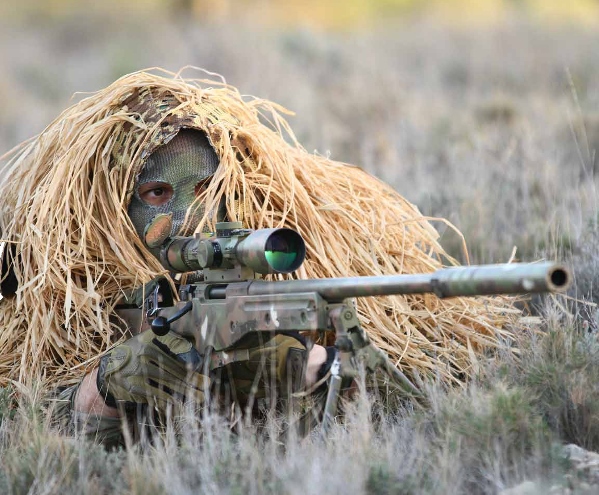
Elite sniper on the ground. Photo: DECET
ARMY UNITS
- Araba Álava |
- Albacete |
- Alicante |
- Almería |
- Asturias |
- Ávila |
- Badajoz |
- Barcelona |
- Burgos |
- Cáceres |
- Cádiz |
- Cantabria |
- Castellón |
- Ceuta |
- Ciudad Real |
- Córdoba |
- A Coruña |
- Cuenca |
- Girona |
- Granada |
- Guadalajara |
- Gipuzkoa |
- Huelva |
- Huesca |
- Islas Baleares |
- Jaén |
- León |
- Lleida |
- Lugo |
- Madrid |
- Málaga |
- Melilla |
- Murcia |
- Navarra |
- Ourense |
- Palencia |
- Las Palmas |
- Pontevedra |
- La Rioja |
- Salamanca |
- Segovia |
- Sevilla |
- Soria |
- Tarragona |
- Santa Cruz de Tenerife |
- Teruel |
- Toledo |
- Valencia |
- Valladolid |
- Bizkaia |
- Zamora |
- Zaragoza



